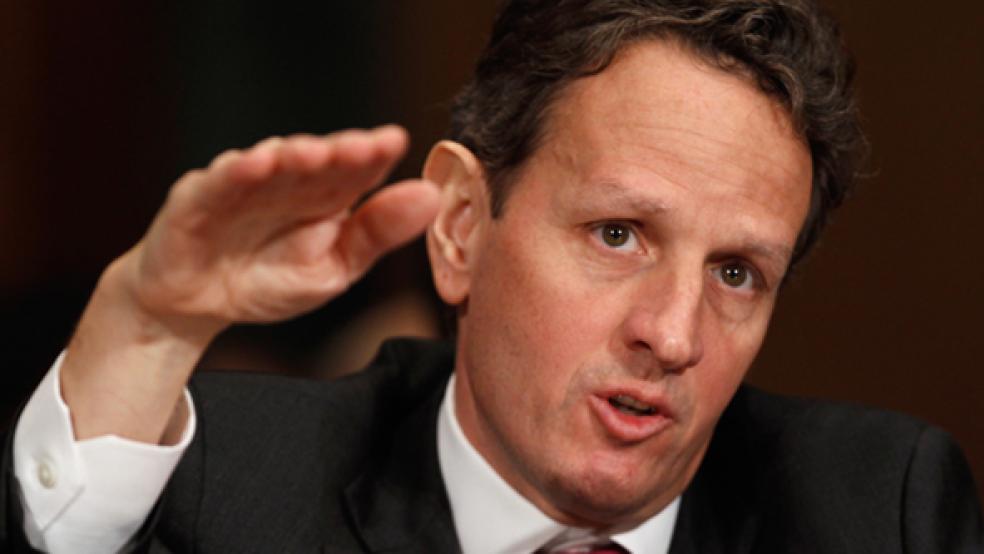An uptick in tax receipts led Treasury Secretary Timothy Geithner to extend the drop-dead date for raising the debt ceiling to August 2, three weeks later than previously thought.
While failure to raise the debt ceiling would still have a “catastrophic economic impact,” he said in a letter to Congress yesterday, the better-than-expected revenue projections gives Republicans more time to exact budgetary concessions before raising the limit. The administration has repeatedly said it wants to separate the vote on the debt ceiling from any long-term plan to bring the budget into balance.
The upsurge in revenue was unexpected. Just last week, government economists said economic growth in the first quarter was only 1.8 percent, far below what’s needed to generate robust job growth. Slower revenue growth was also in the cards because the government last December enacted a one-year 2 percentage point cut in payroll taxes to help stimulate the economy.
Yet total government tax collections rose 4.7 percent in the first quarter compared to a similar period a year ago. For the first half of the fiscal year, revenue is up 6.9 percent, led by a surprising 21.1 percent surge in individual income tax collections. Corporate income tax collections, on the other hand, rose just 2 percent.
Economists speculated Geithner’s comments were probably based on daily receipts reports for April – the one time of year when government revenues traditionally outstrip expenditures. The monthly Treasury report containing April data won’t be available until next week.
“April is when people who did well send in checks,” said Gus Faucher, chief macroeconomist at Moody’s Analytics. Also, “it could be job growth is a little stronger than what (had been) expected” in February, when the government made its last revenue and deficit projections for the year.
The Contingent Workforce
Labor economists suggested structural shifts in the nature of employment may be contributing to government confusion about how much it can expect to receive at tax time. A growing number of workers are now part of what is called the contingent workforce – short-term or contract employees without benefits who can’t find or don’t want full-time jobs and work for multiple employers over the course of a year.
A contingent worker’s income can be highly variable – shrinking in bad years to almost nothing or growing dramatically when the economy expands. Unfortunately, the government stopped collecting data about contingent workers in 2005 because of budget cuts at the Labor Department.
The closest proxy government economists now have is the number of people who define themselves as self-employed in the Labor Department’s monthly household survey. That’s down by about one million to 8.6 million since 2007, the year before the Great Recession. But that year, there were 2.5 million part-time self-employed people. Today, there are 2.8 million self-employed part-timers, even though the total size of the labor force has remained the same compared to four years ago.
“We haven’t had a lot of people rushing back into the labor force for full-time jobs,” said Jim Borbely, an economist at the Bureau of Labor Statistics. It is possible, he said, that many contingent workers picked up more-than-expected freelance and contract work last year, which would have unexpectedly swelled tax collections last month when they filled out their tax forms and found they owed significantly more than what they had sent the Internal Revenue Service in their quarterly payments.
Related Links:
Tax Receipts Allow Geithner to Extend Debt Limit Decision by 3 Weeks (iBankCoin)
Geithner Buries a Bullish Bombshell in Stern Warning about the Debt Ceiling (Business Insider)
Tax Reform: No Magic Bullet for Fiscal Crisis (The Fiscal Times)


